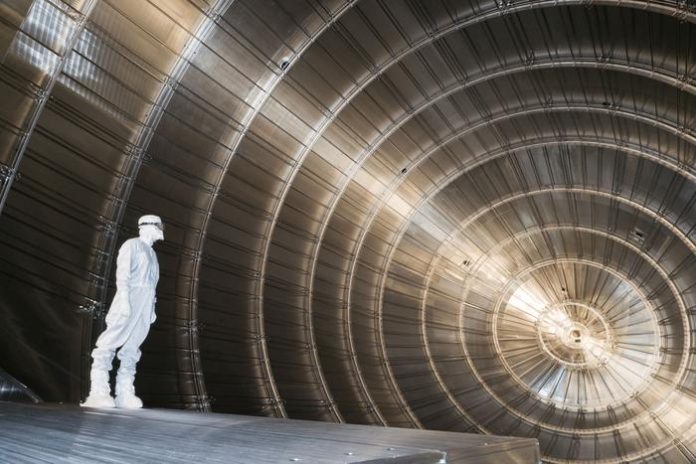In an ambitious effort to uncover the secrets of the Universe, the KATRIN experiment (Karlsruhe Tritium Neutrino) is leading the charge in one of the most challenging areas of modern physics: measuring the exact mass of the neutrino.
Based in Germany and supported by a global network of over 20 research institutions across seven countries, KATRIN has set a new global benchmark in the field of direct neutrino mass measurements.
Neutrinos are incredibly abundant and pass through ordinary matter virtually undetected. Despite their elusive nature, these particles are vital to our understanding of the Universe.
Their tiny mass has significant implications, from influencing the formation of galaxies to revealing gaps in the Standard Model of particle physics. Understanding neutrino mass could lead to discoveries that reshape our knowledge of matter, energy, and the early Universe.
World-leading precision in neutrino detection
The KATRIN experiment focuses on studying the beta decay of tritium, a radioactive isotope of hydrogen.
In this process, tritium decays into helium, releasing an electron and a neutrino. By precisely analysing the energy distribution of the emitted electrons, researchers can deduce the mass of the accompanying neutrinos.
To achieve this, KATRIN employs a state-of-the-art 70-metre-long beamline and one of the largest spectrometers ever built, with a diameter of 10 metres.
This intricate setup allows for the most sensitive and accurate direct neutrino mass measurement to date.
New results set the bar higher
KATRIN’s latest analysis, based on five measurement campaigns conducted between 2019 and 2021, has delivered a remarkable result: the upper limit of the neutrino mass has been reduced to 0.45 electron volts per c², about 8 x 10⁻³⁷ kilogrammes.
This is nearly twice as precise as the results published in 2022 and marks a major advance in neutrino physics.
This milestone was achieved using only about 25% of the total data the experiment is expected to collect.
As KATRIN continues its operations through 2025, further improvements in sensitivity are anticipated, potentially enabling researchers to either detect a finite neutrino mass or reduce the upper limit even further.
Advanced data analysis with AI assistance
Extracting meaningful results from such minuscule energy differences requires advanced computational methods.
The KATRIN collaboration has embraced cutting-edge data analysis techniques, including artificial intelligence, to process and interpret the extremely sensitive measurements.
This technological innovation has been instrumental in pushing the experiment’s precision to new heights.
Eyes on the future: TRISTAN and KATRIN++
The next phase of the project is already taking shape. In 2026, KATRIN will be upgraded with the TRISTAN detector system, which will enable the search for sterile neutrinos – hypothetical particles that may make up a component of dark matter.
These particles are believed to interact even more weakly than known neutrinos and could explain several unresolved phenomena in cosmology.
Alongside TRISTAN, the KATRIN++ initiative will launch a new research and development programme aimed at designing future experiments capable of reaching even higher sensitivity in neutrino mass detection.
Unlocking the Universe’s smallest secrets
KATRIN’s groundbreaking progress is a major step toward unravelling the nature of neutrinos and their role in the cosmos.
As scientists continue to refine their measurements and expand the experiment’s capabilities, the goal of fully understanding the neutrino mass – and its implications for physics and cosmology – comes ever closer to reality.





